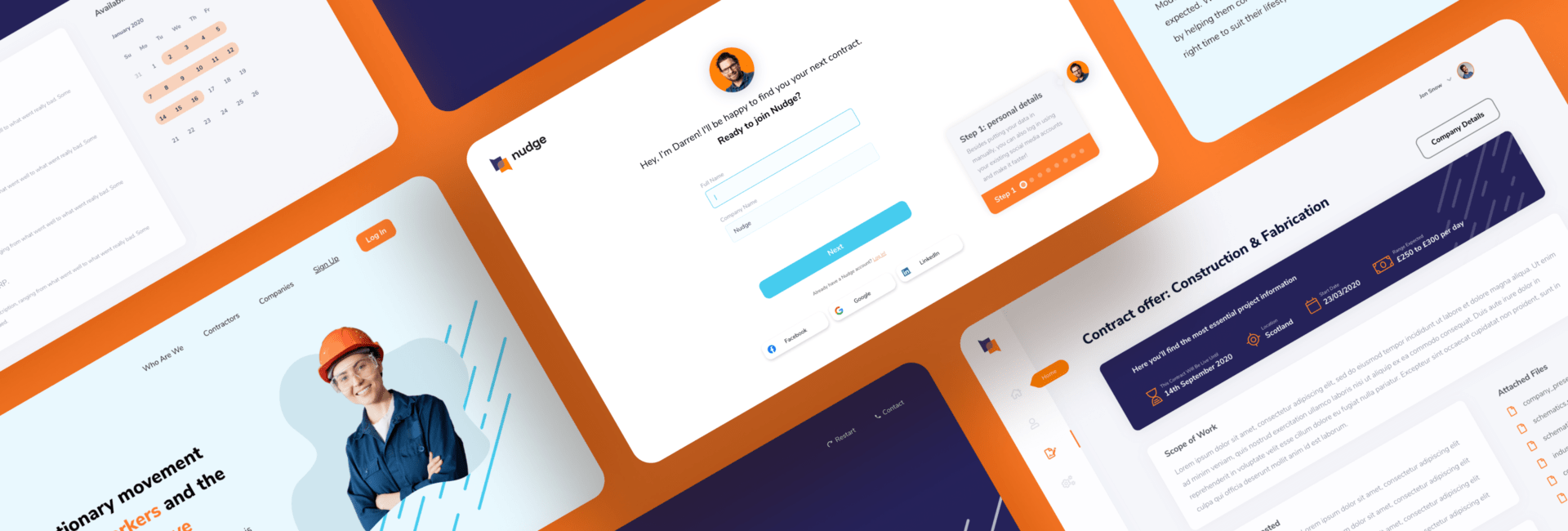May 17th, 2021 | by Klaudia Raczek
Minimum Viable Product Is Not for You - It's for the User. MVP Testing

Table of contents
Just like that: you came up with a new product idea and the more you talk to others about it, the more convinced you are it’s bound to be great.
But can you really be sure your vision materializes? How will you ensure your product rocks the market?
In the end, it’s just a dream until it comes true.
Creating what you believe to be the most useful solution, releasing it on the market, and observing how it responds is a very bad idea. There are countless examples of products that fail within one year from launch. Most of them invested a lot more than planned on marketing post-launch and that didn’t boost the sales at all.
Is there an alternative? Yes! Minimum Viable Product (MVP) and initial usability tests. Many companies overlook testing of their product during the MVP stage because they usually choose this model to optimize costs and save time.
In this article, we’d like to stress the importance of these tests by helping you understand:
- What is Minimal Viable Product testing?
- Why is it important to test your MVP?
- How to collect Minimum Viable Product feedback?
- What to look for in MVP tests?
- How to measure MVP?
- Our approach to MVP user testing
PLAN YOUR MVP STEP-BY-STEP WITH OUR CHECKLIST
Download checklistWhat is MVP testing?
In essence, the Minimum Viable Product methodology concentrates on creating the most basic version of the product you have envisioned so that you could quickly test it with customers and validate your business model while saving both time and money.
You focus on building only a fraction of what you intend your product to be – the very essence – and that’s the best way to validate your value proposition.
Minimum Viable Product
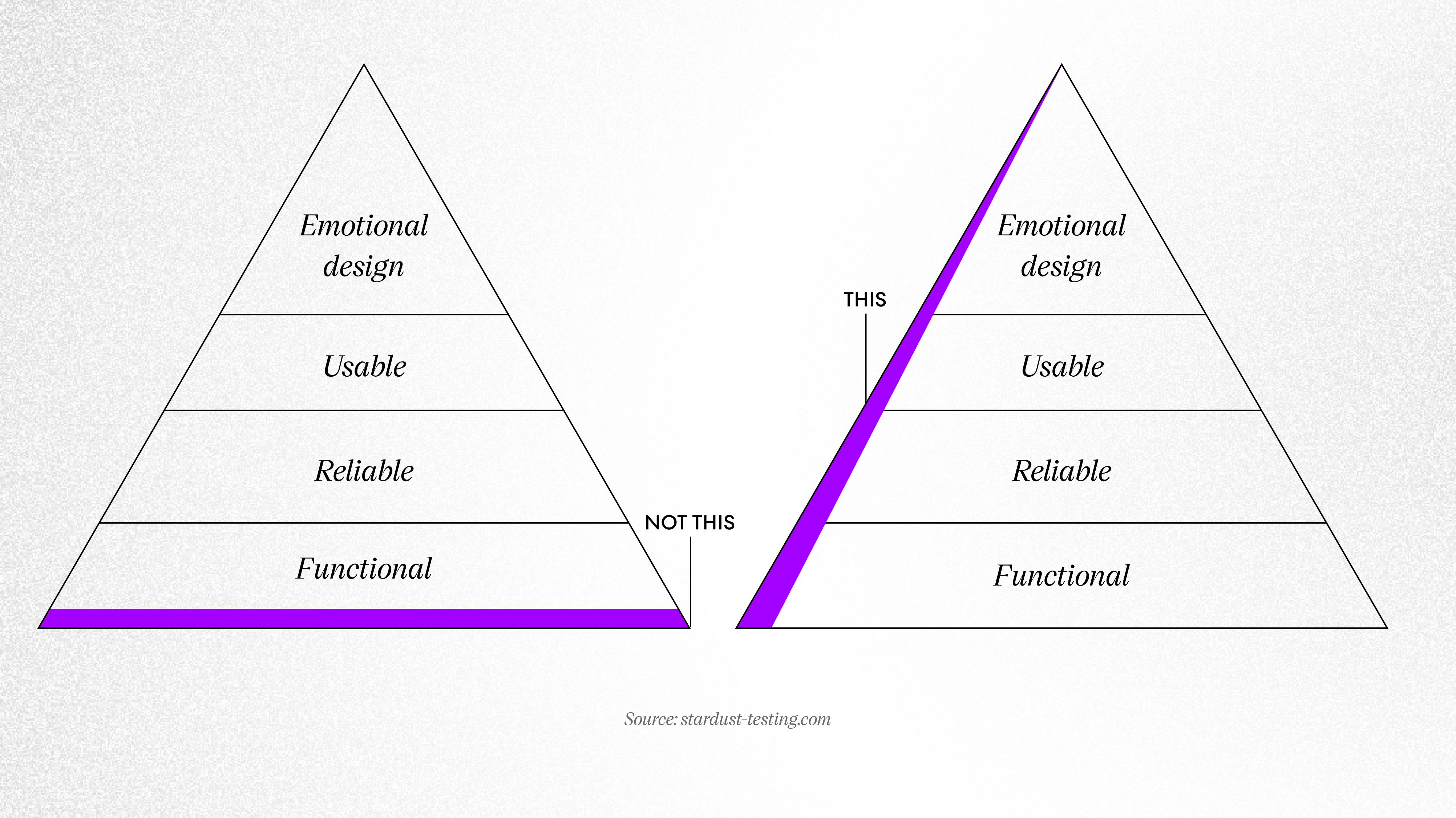
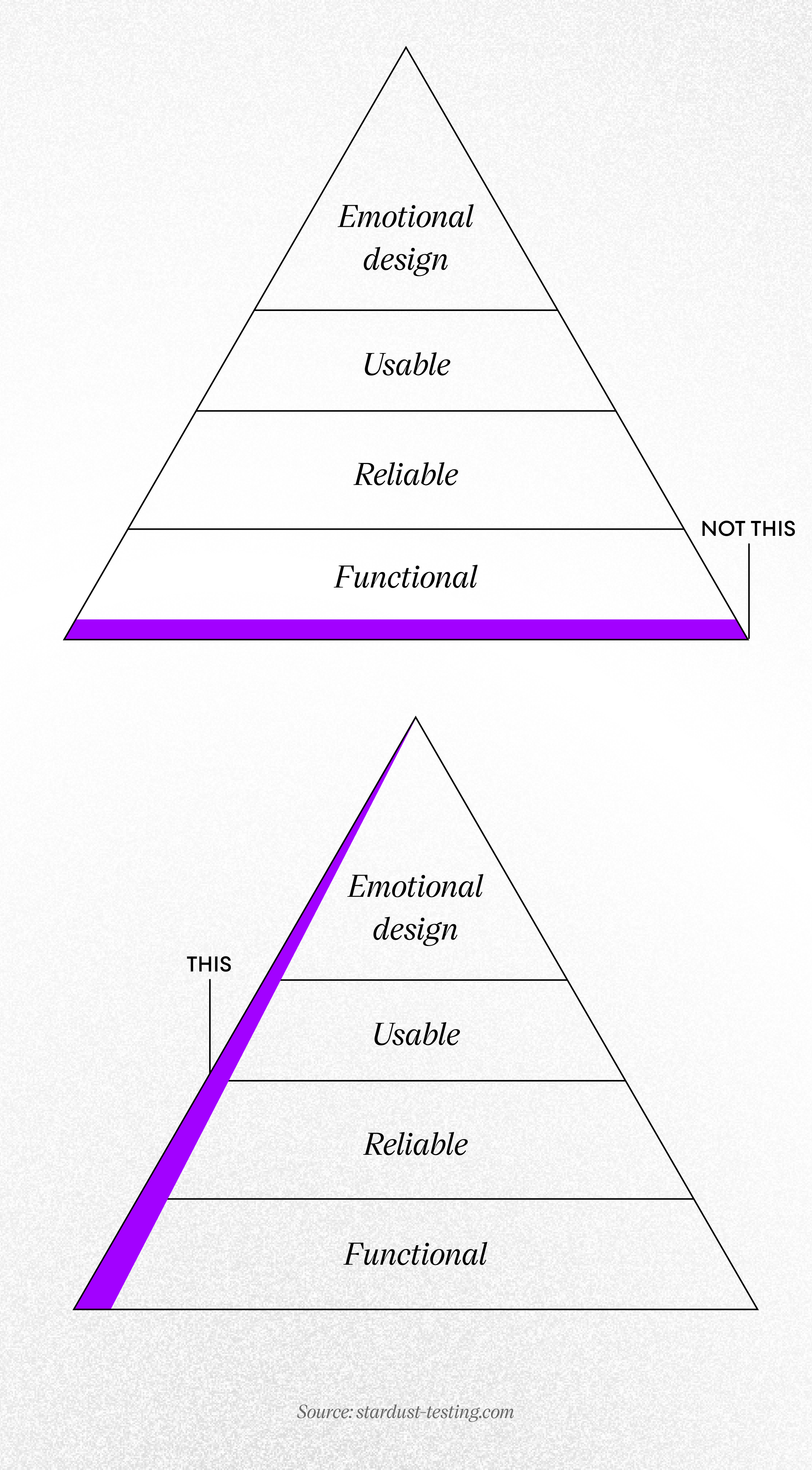
MVP testing is the key part of building an MVP and further stages of the product development life cycle in the lean startup model.
Once the product is released on the market, customer feedback is continuously collected until the end of its shelf life. User testing conducted during the MVP development phase will help ensure your business model is well adjusted to the demands of the target market.
Presenting an early version of the product to customers and collecting their feedback on this “imperfect” version will help you reach perfection in terms of responding to the actual needs of your niche.
In particular, user testing can help you understand:
- your customers – their characteristics, demographics, professional status, etc.,
- the reasons why they behave in a certain way while using your product,
- what your product is missing from their perspective,
- their view on competing products,
- their frustrations with your or your competitors’ products,
- the reasons why they resist adopting or using your software products.
By gathering those insights, you’ll be able to better understand if your product idea has the potential to provide unique value and meet the needs of the target market.
In the end, the MVP model was designed to maximize validated learning in the earliest and quickest way – even before you build the prototype.
A great real-life example of a company that made use of this model is Uber. In the beginning, UberCab (that was the product’s initial name) was targeting passengers only. The MVP testing stage indicated that a much better solution would connect drivers with passengers directly – and that’s how Uber, as we know it today, came to be.
Why test your MVP?
Why is it so important for startup founders to not simply create what they think will be good, but actually talk to potential customers and test the solution with them?
Without MVP testing they base the value proposition and business model on assumptions only – and that’s extremely risky.
Why test your MVP?
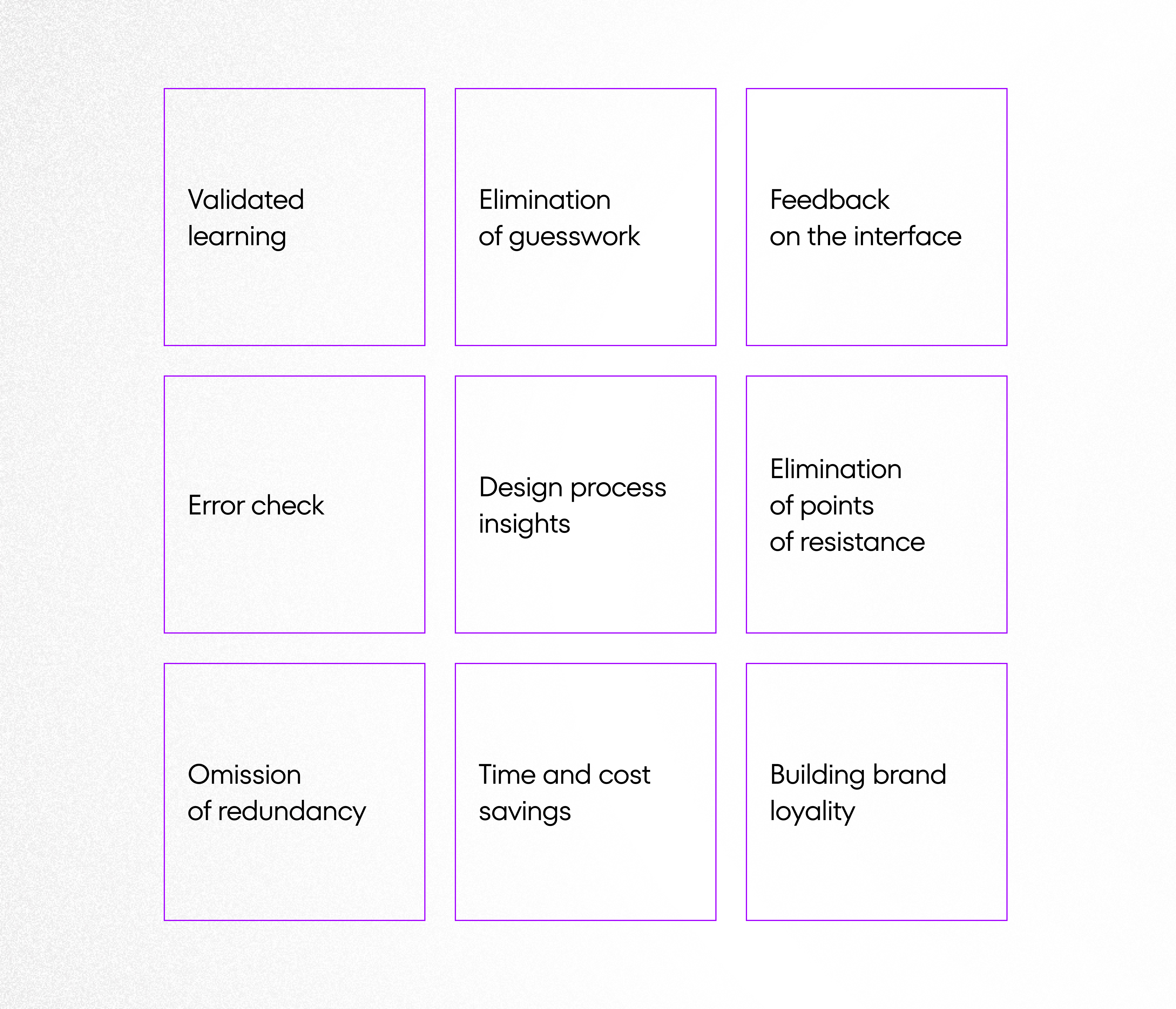
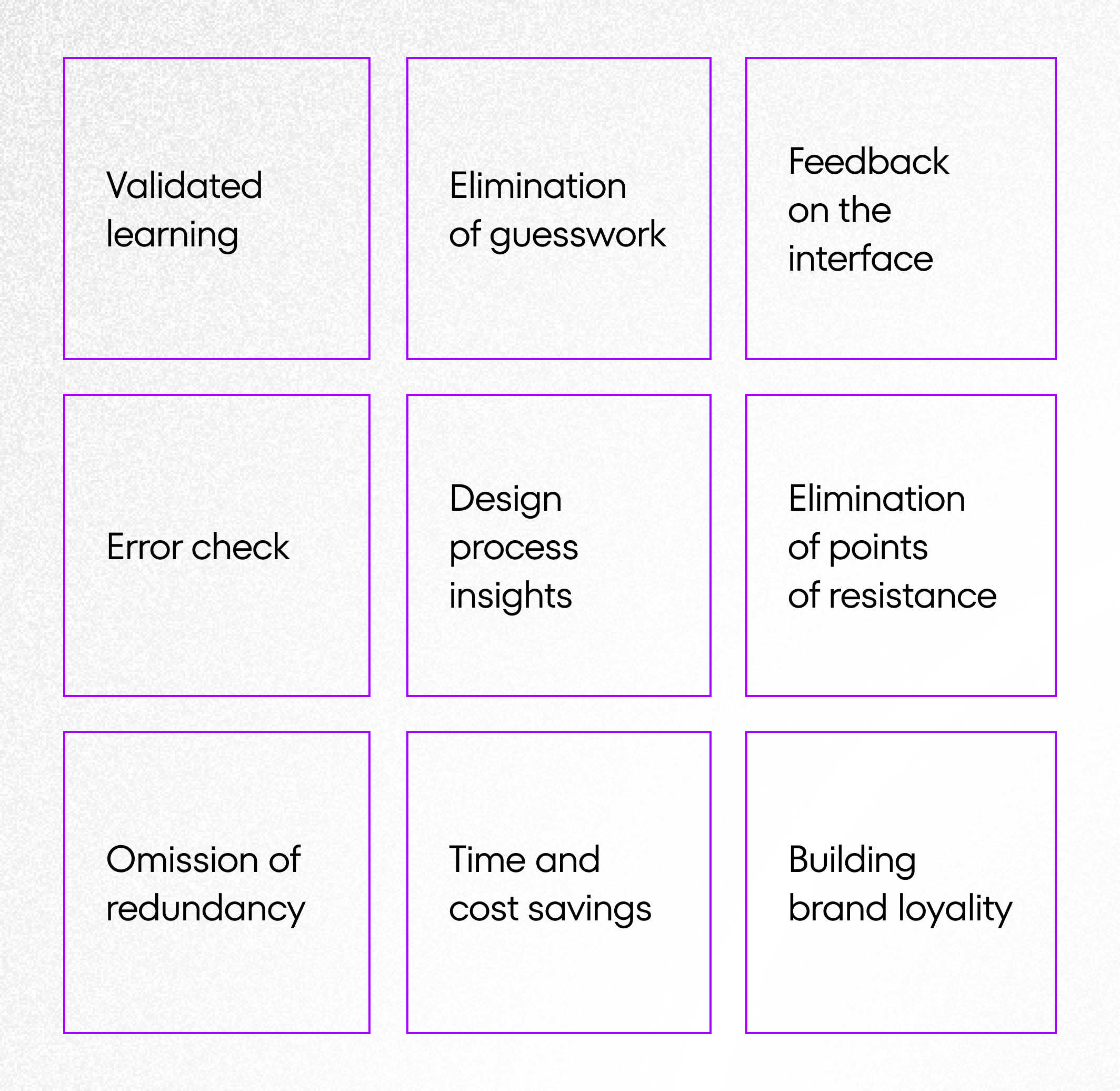
It’s no news in the startup world that as much as 90% of startups fail… The main reason behind this grim statistic is the lack of product-market fit. That’s why it’s critical to test your MVP no matter how promising the idea seems to be. Here are the benefits of MVP testing that bring you closer to building a successful product:
Validated learning
Startups looking to get new software products on the market will find tests particularly meaningful. They’re oriented at checking whether the idea behind the product is a hit or miss. The MVP model is particularly helpful here, as it allows to get a quick confirmation regarding:
Product-market fit:
Minimum Viable Product tests help ensure your product meets customer expectations. This includes checking the functionalities, interface, and design. You’ll be informed about errors and major bugs.
Business model:
By building an MVP you’ll be able to understand the product’s strengths and weaknesses, as well as potential missing functionalities.
If there’s no confirmation from potential customers, it could suggest the need to modify the product or abandon the idea altogether. This may not be what you anticipate learning, but getting this invaluable feedback before you release a full-fledged product will save you a lot of development and marketing money.
Elimination of guesswork
Since you get valuable comments from product customers, the development process will be insight-driven and not based on developers’ guesswork. You shouldn’t trust what the users say, but instead, examine what they actually do once they start using the product.
Feedback on the interface
Your beta-testers will give you valuable feedback on both user experience and interface. They can also verify if there are no significant functional bugs, although that’s not what they are primarily looking for in the Minimum Viable Product.
Error check
MVP testing also helps identify small mistakes such as broken links, misplaced content, unoptimized images, typos, and many more. These errors may be small, but they can be frustrating for the end-users and this bad impression could lead them to seek alternative solutions.
Design process insights
Insights from beta-testers will fuel the design process, which is invaluable in achieving product stickiness that translates directly into a competitive advantage. The insights will be of particular importance as you add new features to the MVP and strive to improve the overall customer experience.
Elimination of points of resistance
Testers will tell you why they’re not willing to use your product. This information will help you eliminate or reduce pain points by improving the overall UX.
Omission of redundancy
Testing the MVP will indicate where a procedure is overcomplicated, where the action takes too many steps to complete, or what can be simplified. You can use this feedback to eliminate unnecessary actions.
Time and cost savings
Gathering user feedback early on during the Minimum Viable Product development stage helps you save both money and valuable time that would otherwise be allocated to working on a full-fledged product. Read more about MVP price here.
Building brand loyalty
Testing your MVP is an opportunity to listen to users with empathy. You can respond to their comments by creating an optimized and intuitive user journey as well as offering an outstanding customer experience. All of these elements make sure customers use your product again and again, and that will ultimately translate into brand loyalty.
PLAN YOUR MVP STEP-BY-STEP WITH OUR CHECKLIST
Download checklistHow to collect MVP feedback?
Contrary to what many founders think, testing goes far beyond simply asking potential customers “would you use this?”.
You should never trust what users say they would do, but actually, check how they behave when using the tool as they’re poor at judging their own behavior.
The Minimum Viable Product is created so that you could gather feedback from customers and develop a product that will meet their needs.
To collect this feedback, you first need to build your Minimum Viable Product and present it to the relevant study group. Then, you conduct interviews with them to test specific assumptions about the product.
First, build an MVP
What does an MVP look like? Check the below case study about our cooperation with Nudge ⬇
The final look of an MVP depends on the type of product you want to offer (and your budget). The following should be enough to showcase what kind of product and features you’re willing to offer:
- wireframes,
- clickable prototypes,
- interactive prototypes,
- live products.
Startups can also seek early verification through:
- dedicated landing pages – are you familiar with Buffer? All his founder Joel Gascoigne did was create a landing page to verify the MVP. In fact, he created two landing pages where one described the intended product features and the other gave an option to subscribe. These landing pages were a source of valuable analytics that fueled product growth in the future;
- explainer video – this is an excellent way of providing a robust explanation in a short timeframe, and demonstrating how specific functionalities work (instead of just describing them). Remember to use the explainer video as a conversation starter;
- crowdfunding campaigns – these could be an excellent option for founders with minimal budgets – the volume of interest will provide insight as to the market demand for your idea;
- ad campaigns – these will make the most of the user persona created at the onset of MVP building. Ad campaigns can offer robust insights through analytics, but you need to be clever about how you design your campaign.
The most important thing to keep in mind when building the MVP test?
Always pay attention to showcasing the value proposition (aka the unique selling point) that you want to offer!
Seek MVP feedback through customer interviews and observation
Once your tangible MVP is ready, it’s time to put it to the test…
It will consist primarily of customer interviews and observing their behavior. As part of this process, you should:
- Define the profile of your target customer.
- Gather a pool of up to 10 potential customers.
- Identify a set of representative tasks.
- Ask the users to perform them.
- Observe each user as they carry out these tasks. Observe only – do not interrupt them, nor correct them. Their mistakes will show you how to optimize the product from the users’ perspective.
- Follow up with a series of open-ended questions.
When testing the MVP, some questions will be universally asked during each interview, while others have to be tailored to the specific product.
Above all, testers should focus on understanding:
- Why a user took a specific action while attempting to complete a goal?
- What did they expect to happen when they did it?
- What thoughts did they have as they performed the action?
- What did they try to do but couldn’t?
Knowing what questions to ask is just as important as knowing when to ask them. Observing customer behavior during MVP tests will provide relevant triggers. Look closely for clues! Here are some examples:
- A customer spends more time than expected on a specific part of their journey – this could indicate that completing a task confuses them (but doesn’t have to).
- A customer abandons even though they attempted to complete it – this could indicate they were unable to figure out how to complete it or that some of the steps are unnecessary.
Don’t be afraid to ask a multitude of questions! Users generally feel heard and empowered when they have the opportunity to contribute to product development. As they see the changes being implemented, their trust in your brand increases as well.
What to look for while testing the MVP?
Running effective MVP tests involves establishing specific goals. These will be oriented at:
- exploring the general expectations towards the product,
- assessing the usefulness of the app and its functionalities,
- assessing the structure of the elements of the solution,
- checking the usability of the flow for the current MVP version,
- general suggestions and feedback.
How to measure MVP?
Minimum Viable Product testing is an opportunity to answer technical questions regarding the ways users interact with the product and test the viability of the product within the target market and the design itself.
How to find out how users interact with your MVP?

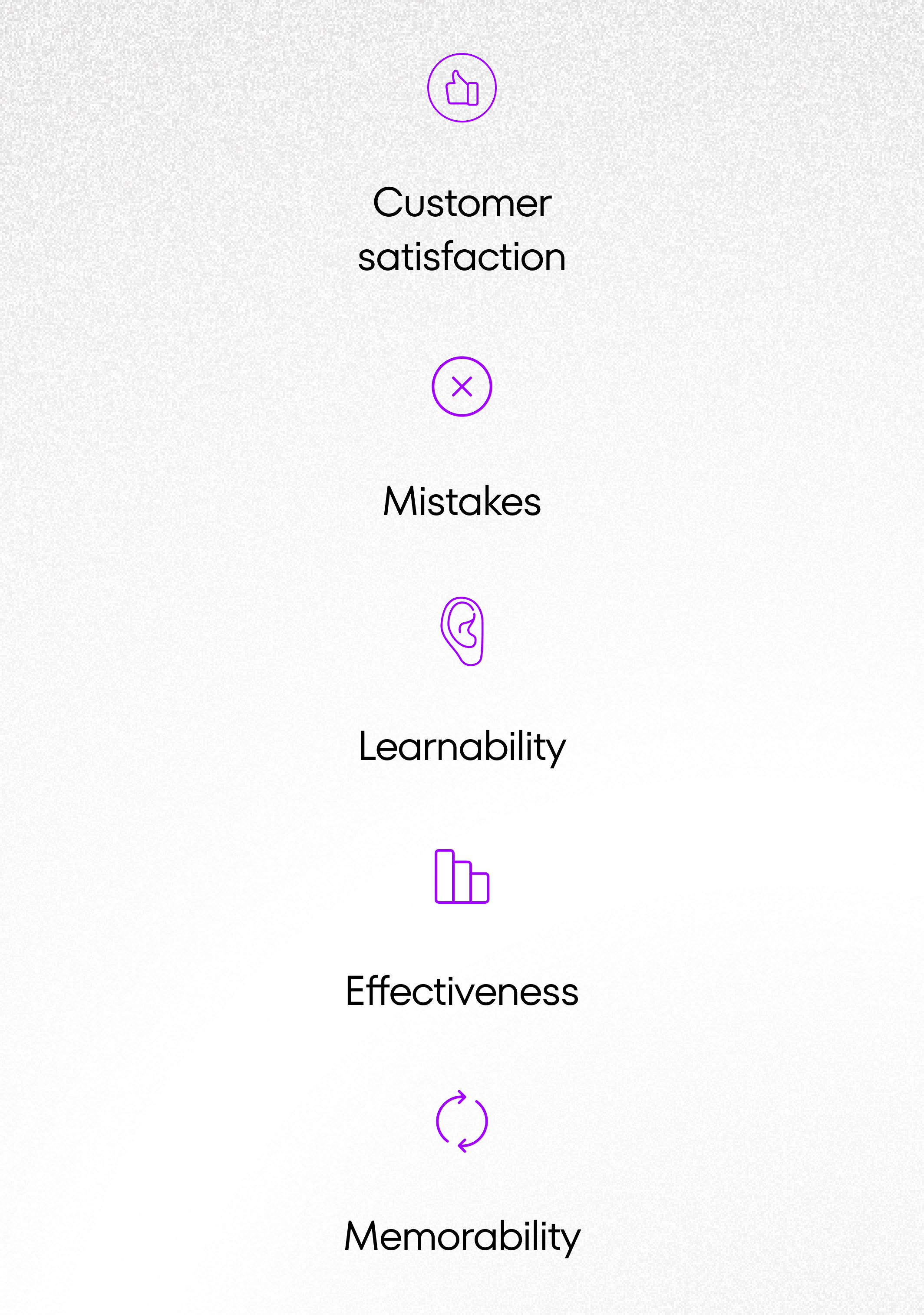
Here’s what you should pay attention to:
- Customer satisfaction: how satisfied is the user with your product and its specific features and functionalities?
- Mistakes: how many mistakes does the user make when using your application?
- Learnability: to what extent is it easy for them to complete specific tasks when they use them for the first time?
- Effectiveness: how quickly can they complete these tasks?
- Memorability: after a long break, how much time do they need to remind themselves how to perform that action once again?
Our approach to MVP user testing
At CSHARK, we like to initiate the MVP development process by conducting two workshops focused on maximizing the value of your MVP.
The first, the product discovery workshop, is oriented at fine-tuning the concept of the product. The second identifies the best technologies based on the functionalities prioritized in the first set of workshops.
During the first set of workshops, we ask the key questions behind the product idea: who is it for? What is it supposed to do? How? This is followed by identifying the unique value proposition and brand characteristics, which are then translated into design solutions. Next, we create a low-fidelity prototype and a scenario for conducting meaningful interviews with users.
We conduct MVP tests in the form of a conversation between the user and the moderator lasting about an hour, based on a previously prepared scenario. During each of the meetings, we invite the respondents to participate in a video conference and present the prototype of the product. Respondents go through the product while constantly providing their feedback to each element of choice. We then accompany each usability study with a short interview aimed at exploring the user’s needs.
The goal of our user tests is to verify the assumptions and search for potential improvements and key, critical issues. Tests consist of experiments with the actual or potential product users to obtain a set of insights about the design. They focus on subjective, qualitative data that can describe the user experience.
Based on the results, we create a relevant technology blueprint pointing to the best tech solutions – the details are worked out during the second set of workshops with the client.
Always test your MVP with customers!
If you want to build a great product, adopt the Minimum Viable Product (MVP) strategy and make sure to test it – always!
MVP testing will help you understand the WHY behind customer behavior. Why are people using one feature more often than others? Why do most of the customers stop creating accounts on the last step? What causes customers to use your product less frequently and eventually stop altogether?
This will help you verify if releasing all the planned features is a good idea. It will also answer critical questions about the shape of the product. All this will set up your end product for outstanding success.
